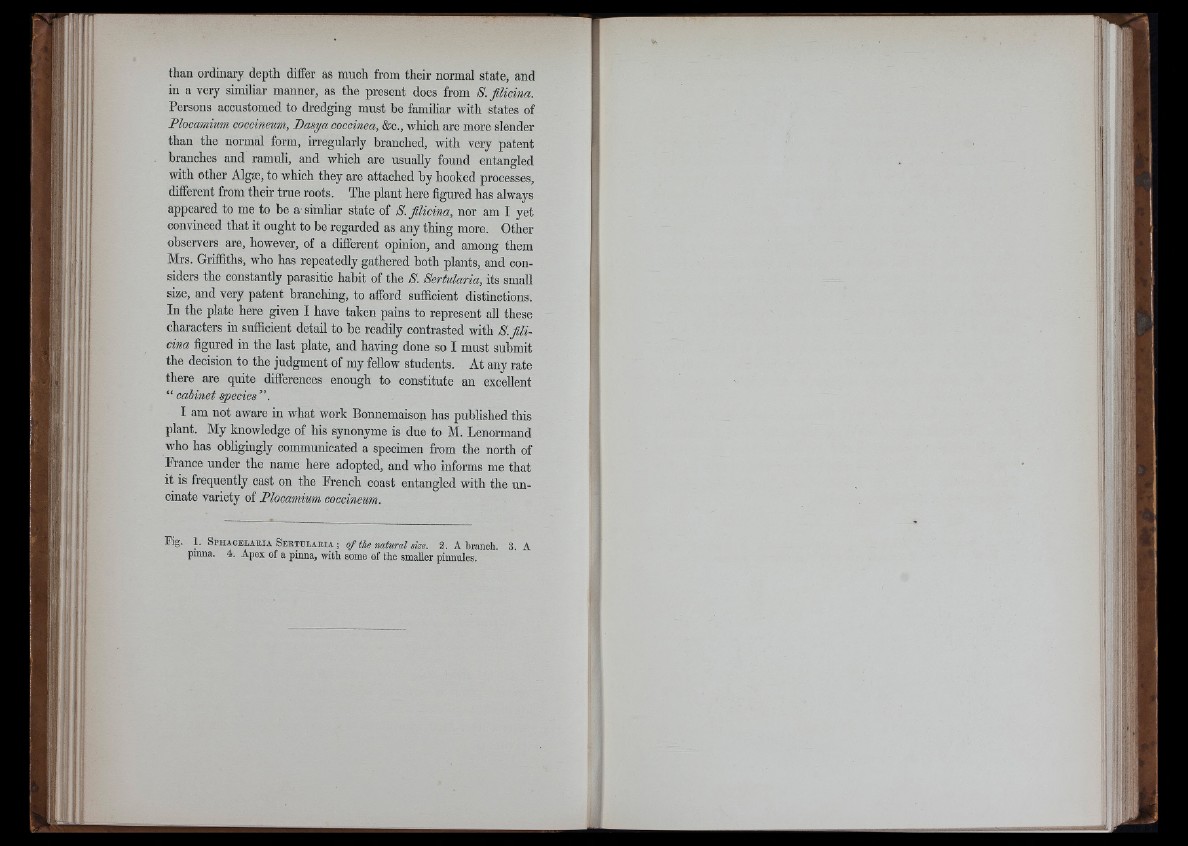
I :.M,
Ii
r '
i i
than ordinary depth differ as much from their normal state, and
in a very similiar manner, as the present docs from 8. filicina.
Persons accustomed to dredging must be familiar with states of
Plocamium coccincum, Basya coccinea, &c., which are more slender
than the normal form, irregularly branched, with very patent
branches and ramuli, and which are usually found entangled
with other Algae, to which they are attached by hooked processes,
different from their true roots. The plant here figured has always
appeared to me to be a similar state of 8. filicina, nor am I yet
convinced that it ought to be regarded as any tbing more. Other
observers are, however, of a different opinion, and among them
Mrs. Griffiths, who has repeatedly gathered both plants, and considers
the constantly parasitic habit of the 8. Sertularia, its small
size, and very patent branching, to afford sufficient distinctions.
In the plate here given I have taken pains to represent all these
characters in sufficient detail to be readily contrasted with 8. filicina
figured in the last plate, and having done so I must submit
the decision to the judgment of my fellow students. At any rate
there are quite differences enough to constitute an excellent
“ cabinet species ”.
I am not aware in what work Bonnemaison has published this
plant. My knowledge of his synonyme is due to M. Lenormand
who has obligingly communicated a specimen from the north of
France under the name here adopted, and who informs me that
it is frequently cast on the French coast entangled with the uncinate
variety of Plocamium coccincum.
Kg. 1. Sphaoelakia Sertulakia; 3. A branch. 8. A
puma. 4. Apex of a pinna, with some of the smaller pinnules.
I i v'l
isL
'ill
■ If1
t i l
■ ■ US-1
I I f
i t